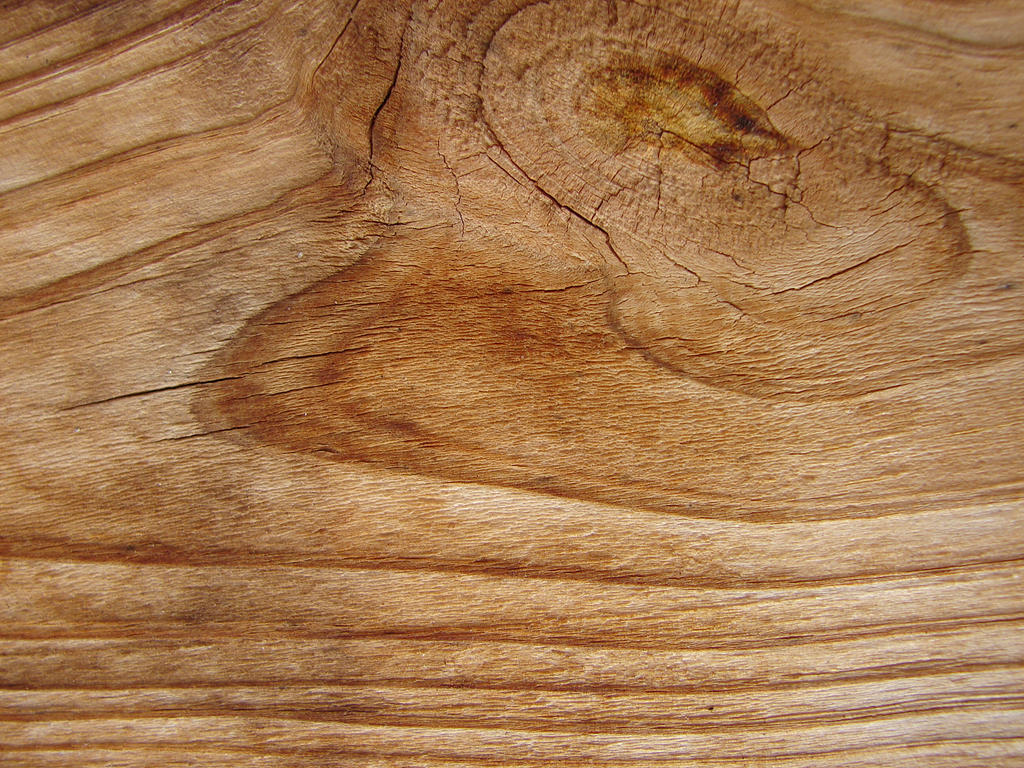Table of Contents
When you are working with wood, it is important to choose the right piece of timber for your project as different species of wood have different grain patterns. While there are many aspects to consider, wood grain is one of the more important. The type of grain you choose will influence the appearance of the wood as well as how easy or difficult it is to cut.
But if you are new to woodworking, you will notice that there are a lot of terms that are often used interchangeably referring to wood grain. In this guide, we want to simplify these terms and give you a clear distinction between them all. This will help you when selecting wood and will broaden your knowledge, making you a better woodworker.
What Is Wood Grain?
In a technical sense, the term wood grain refers to the appearance, alignment and texture of the wood fibres. This is not to be confused with the term figure which refers to the pattern that these grains create; more on that later!
Woodgrain can make a huge difference in the appearance of a board with some types being incredibly attractive. However, certain grain types and how they are cut can make working with wood more difficult.
Wood grain is caused by the way that the tree grows. This means that every piece of wood ends up with a very distinct grain direction but the appearance of this can be altered depending on how the wood is cut.
There are several different types of grain that we will look at in more detail later in this guide. However, for the most part, these can be cut into ways that reveal a stunning wood figure. The only exception to this is a straight grain. That said, straight grain is the only type whose strength is not affected when used in home crafting projects. If DIYers don’t take great care, there is a significant chance that the grains will separate during cutting.
Origins Of The Term ‘Wood Grain’
According to our sources, the term wood grain dates back around 500 years to the year 1560. Metaphorically, grain was meant to describe the smallest of things and in wood, it describes the smallest fibres which make up the wood.
There are many phrases and words that have come off the back of this including the popular saying ‘against the grain.’
Against the grain is thought to have come into use some years after the term wood grain, in around the year 1650. While it was originally coined to describe the act of cutting in the opposite direction to the wood grain, the phrase was then used to talk about facing difficulties since this type of cut is much harder to achieve.
Wood Grain Patterns
There are an enormous amount of grain types but in the main, there are six that you should be aware of. Depending on the effect you would like for your project, you might choose any one of the following. The appearance of the grain begins with the growth pattern of the tree from which the wood was taken.
Straight Grain
Straight grain wood has a uniform pattern with a grain that runs in a single direction. There are very few waves or curls and the grain runs parallel to the tree axis. One of the benefits of straight grain wood is that it has an incredibly smooth texture compared to other types that may be much coarser.

Cross Grain
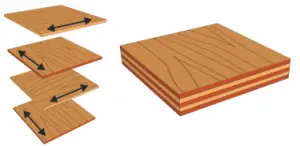
As the name may suggest, cross grain wood features grain lines that run diagonally across the board. However, this is not in relation to the growth of the tree but more to do with how the board is cut. One of the most common types of cross grain is plywood which is often used for cabinet making.
Spiral Grain
Not all trees grow directly upwards. There are some species, and even anomalies of others, whose trunks twist as they grow. This causes the grain to take on a spiral appearance. Sometimes this is called winding grain but they are both referring to the same thing.
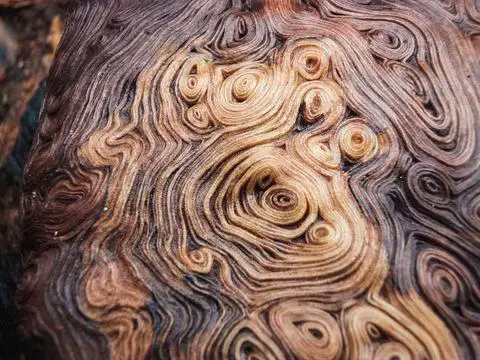
Open and Closed Grain
As well as the pattern that the grain makes, we also look at the pores of the grain line. The result is that some wood is classed as open grain while other woods are classed as closed grain.
Open grain wood features larger pores. However, the biggest downside to this type of grain is that the wood absorbs finishes far more unevenly. When you are attempting to complete a very intricate or finely crafted project, this can be incredibly problematic.
On the other hand, closed-grain wood features very small pores which are often not even visible to the naked eye. However, the word closed might not be the most apt description since the grains are not, in theory, closed but rather they are just very small. This is owing to the fact that the tree grows much slower.
Open wood grain patterns occur in wood with large pores, such as Pine, Elm, Ash and Oak.
Closed grain, or fine grain wood has smaller pores such as Maple, Birch and Alder.
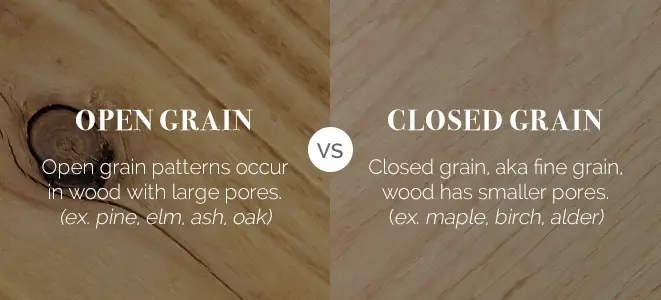
Rippled
You may sometimes hear rippled wood being called curly or flamed but they are all one of the same thing. This type of wood grain occurs because of compression which usually happens at the base of a large tree or at a point where the wood is supporting a heavy branch. As a result of this compression, rippled grains are created that take on an almost 3D effect.
Curly maple is one of the most popular types of rippled wood and is popular for crafting things like wooden musical instruments such as the violin or guitar.

Figured Grain
There is a lot of confusion between grain and figure when it comes to wood but once you understand, it becomes far simpler.
Figured grain refers to any type of texture or pattern created by the grain. Sometimes, this is called speciality wood, although this can also refer to other features. When talking about figures in wood, these can be caused by a variety of different things including anything that may disrupt the original grain.
Different types of figured grain are called: crotch, ray fleck, spalting, stump or butt, bird’s eye, blister or quilt, burl, curly, tiger, fiddleback, mottled, bee’s wing, pommele, plum pudding, and ribbon-stripe.
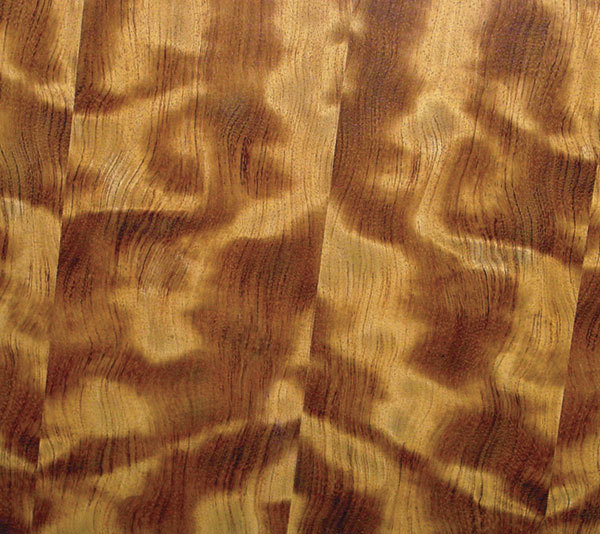
Wood Grain Terms Explained
As well as understanding the different types of wood grain, it is important to understand the terminology that comes with working with wood grain. Below, we have detailed some of the most common terms.
Against The Grain
When cutting wood with any type of tool, if you go in the opposite direction to the grain, this will make things more difficult. The term is often used figuratively to describe facing a difficult struggle or hardship. When you cut against the grain, the result is far less smooth and more uneven. This is often the case with tasks such as tear-out or chipping.
With The Grain
Similarly, cutting with the grain will affect the end result. This refers to a cut made along the same path as the grain leading to a smooth, even finish.
End Grain
The term end grain refers to making right angled cuts along the grain. The most obvious example of this is cutting the ends from a board.
Across The Grain
Cutting across the grain refers to exactly what it describes; making a cut directly across the grain lines. However, the plane will still be aligned with the lines.
Conclusion
Wood-grain refers to the lines that run through a piece of wood and these form as the tree grows. Depending on how the tree grows, the grain might run in several different directions. However, it is also important to consider the texture that the grain creates and choosing the right wood for your project relies heavily on inspecting the grain.
This is important because some grains are easier or harder to work with than others and if you are looking for a specific appearance for your project, the direction of the grain will have a massive impact on its aesthetics.

